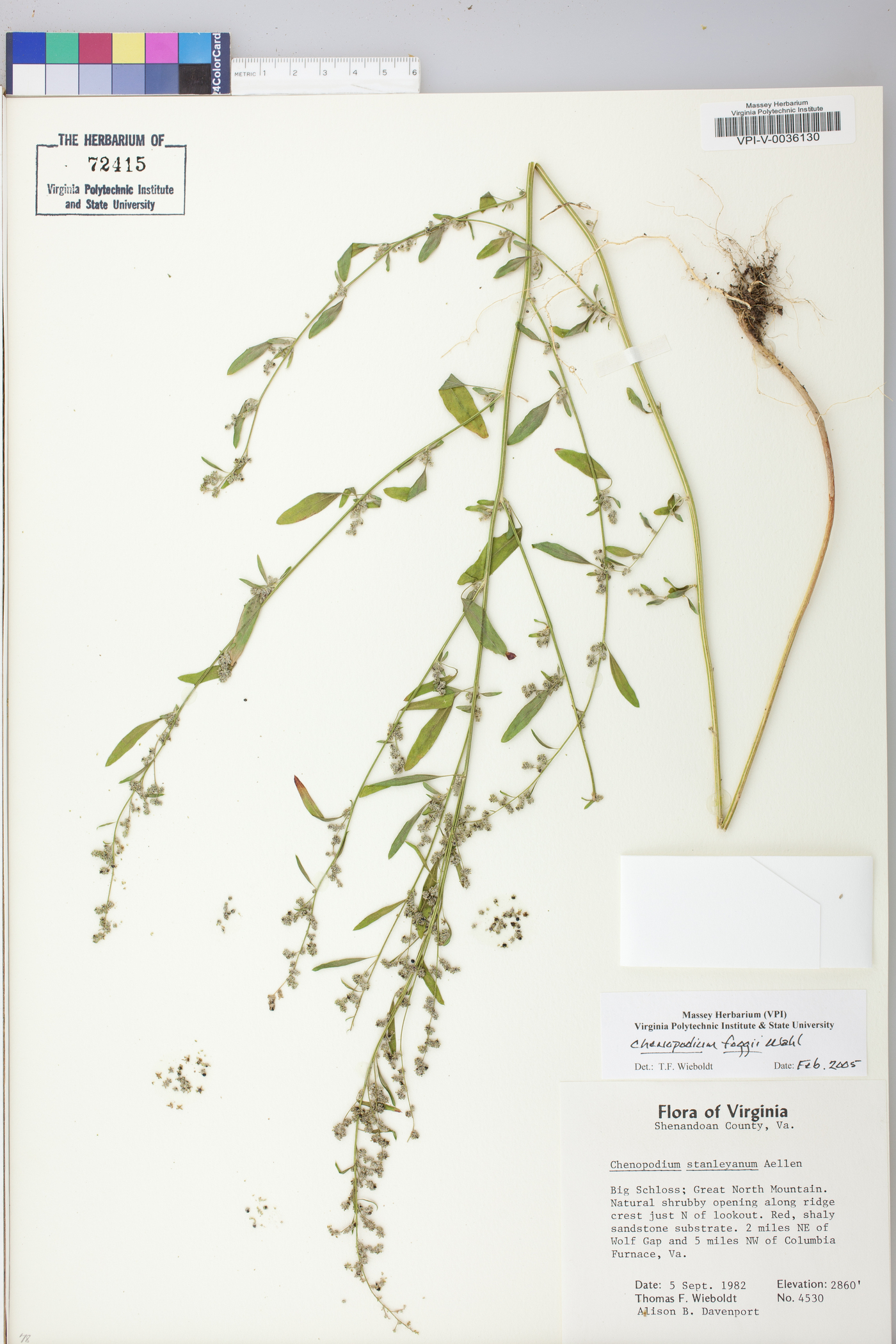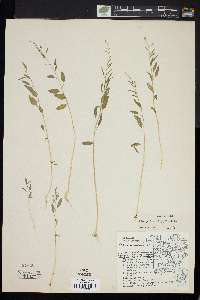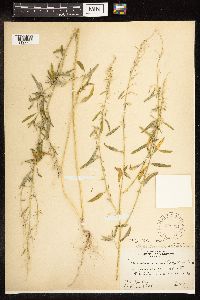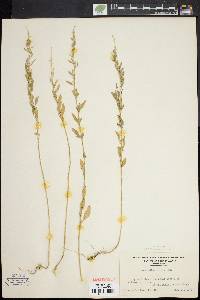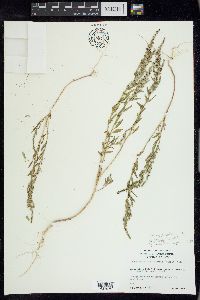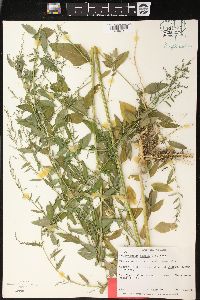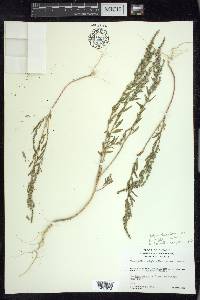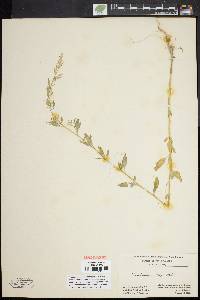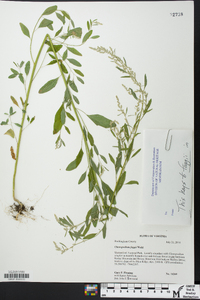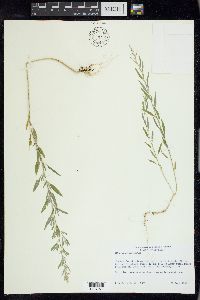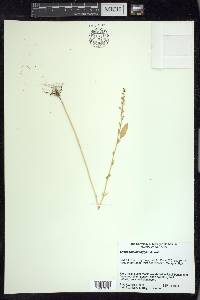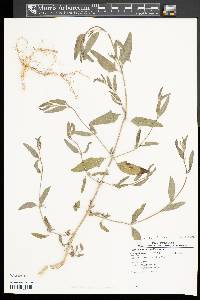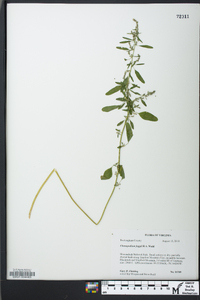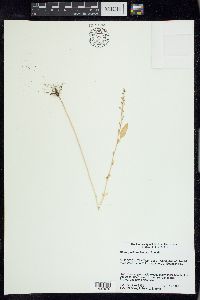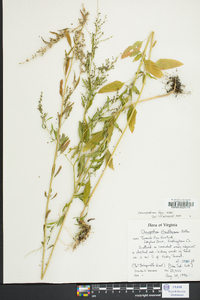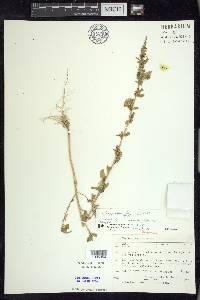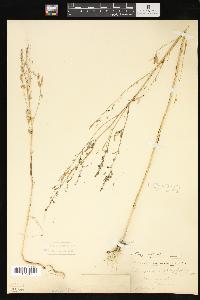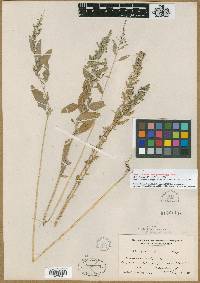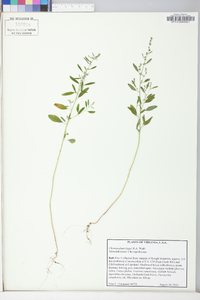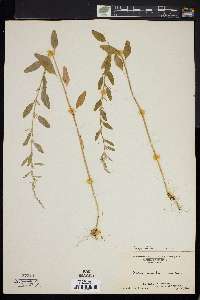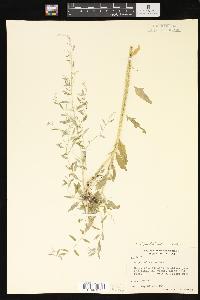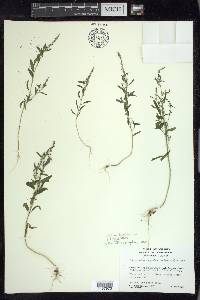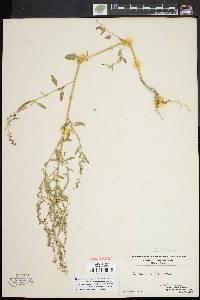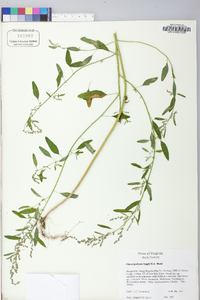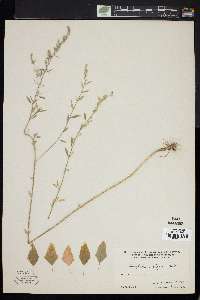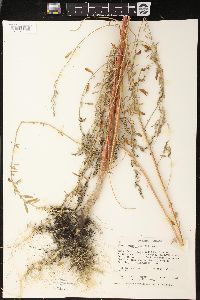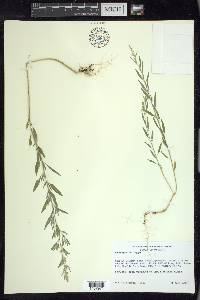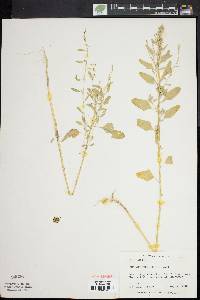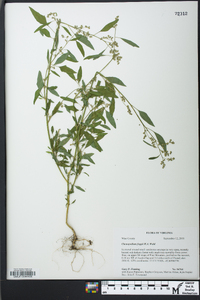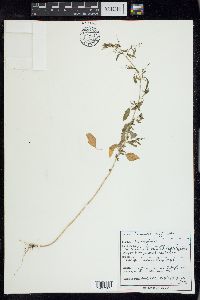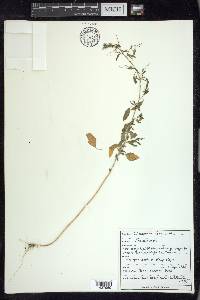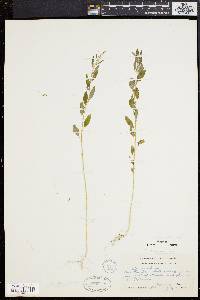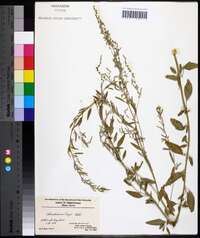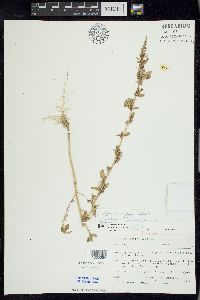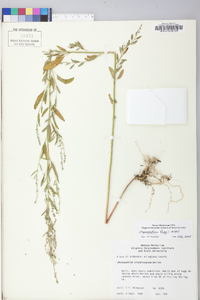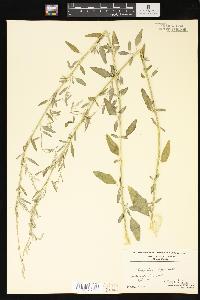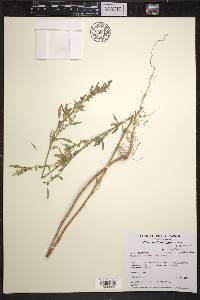
|
|
|
|
Family: Amaranthaceae
Fogg's Goosefoot
|
Stems erect, simple (or branched), 1-1.5(-10) dm, sparsely farinose. Leaves nonaromatic; petiole 0.4-0.7 cm; blade ovate-lanceolate, 3-veined, (1-)1.4-2.4(-4) × (0.05-)0.5-1.1(-2) cm, base cuneate, margins entire or with 1-2 teeth below middle (several teeth), apex acute to acuminate, farinose. Inflorescences glomerules in terminal and lateral spikes, 2.5-5(-7) cm; glomerules ± spread out, maturing nearly the same time; bracts unknown. Flowers: perianth segments 5, distinct nearly to base; lobes elliptic or narrowly ovate, 0.7-1 × 0.5-0.7 mm, apex acute, keeled, farinose, covering fruit at maturity; stamens 5; stigmas 2, length unknown. Achenes or occasionally utricles ovoid; pericarp adherent, occasionally nonadherent, smooth. Seeds round, (1.1-)1.2(-1.4) mm diam., margins rounded; seed coat black, finely rugulate. 2n = 18. Fruiting late summer. Rocky woods; 100-1000 m; Ont., Que.; Maine, Mass., N.H., Pa., Vt., Va. It has been suggested that Chenopodium foggii is a depauperate form of C. standleyanum. We believe that the citations for the upper Midwest represent either C. standleyanum or C. pratericola. Material from New England of C. foggii, while rare, does appear distinct because of its keeled perianth segments and sparse farinose hairs as well as its narrowly ovate to ovate leaves and smaller inflorescence.
Annual herb 10 cm - 1 m tall Stem: upright, unbranched or branched, sparsely white-mealy. Leaves: alternate, on a 4 - 7 mm long stalk, 1 - 4 cm long, 0.5 - 2 cm wide, widely lance-shaped with a tapering base and pointed tip, typically three-veined, sometimes bearing one or two teeth below middle, white-mealy. Inflorescence: a small cluster of flowers (glomerule), which together form terminal and lateral spikes, 2.5 - 7 cm long. Flowers: greenish, small, with five nearly distinct sepals and no petals. Sepal lobes to 1 mm long, elliptic to narrowly egg-shaped with a pointed apex, keeled, white-mealy. Stamens five. Stigmas two. Fruit: one-seeded (achene or sometimes a utricle), enclosed in the persistent, incurved sepals, egg-shaped, smooth, thin-walled. Wall (pericarp) adherent to the seed, sometimes not. Seed horizontal, black, shiny, about 1 mm wide, spherical, round-margined, finely wrinkled. Similar species: No information at this time. Flowering: August to October Habitat and ecology: Rare in the Chicago Region. Has been found in fields, gravel pits, vacant lots, disturbed soil, and waste ground. Occurence in the Chicago region: native Etymology: Chenopodium comes from the Greek words chen, meaning goose, and podion, meaning "little foot," referring to the leaf shape of some species. Author: The Morton Arboretum |
This project was made possible in part by the Institute of Museum and Library Services [MG-70-19-0057-19].
Powered by Symbiota

